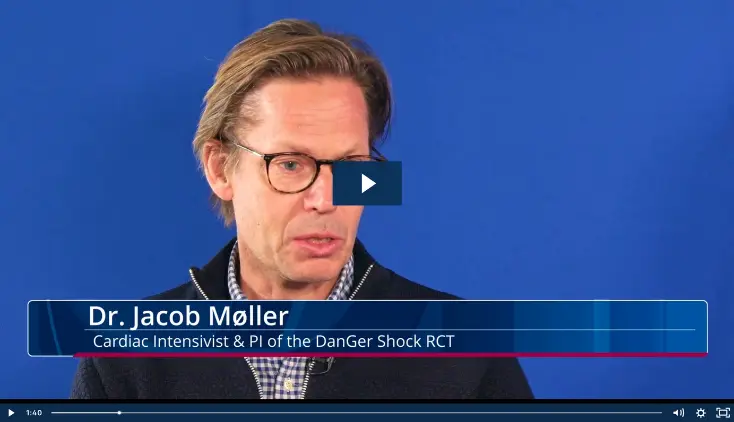AMI Cardiogenic Shock
Top Cardiogenic Shock Treatment Objectives and Device Options
What is Cardiogenic Shock?
Cardiogenic shock is a life-threatening condition that occurs when the heart can no longer pump enough blood to the body, usually as a result of an acute myocardial infarction. The goals of cardiogenic shock treatment are to restore blood flow and protect organs from damage. The Impella® heart pump provides hemodynamic support and is the only medical device approved for cardiogenic shock treatment in cases of high-risk patients.
Identifying Signs and Symptoms of Cardiogenic Shock
According to the National Cardiogenic Shock Initiative Protocol (NCSI) and Abiomed’s Cardiogenic Shock Protocol, cardiogenic shock is identified by hypotension (<90/60 mm Hg), the need for vasopressors or inotropes to maintain systolic blood pressure >90 mm Hg or evidence of end organ hypoperfusion (oliguria, cool extremities, or lactic acidosis), and elevated serum lactate levels (> 2mmol/L).
What are Cardiogenic Shock Treatment Options?
Treatment options are medications, cardiac procedures and surgery, and the use of medical devices. Common medications used are inotropes and vasopressors to maintain or restore blood pressure, and anti-platelet drugs to help dissolve any blood clots or prevent new clots from forming.
However, time is of the essence in cardiogenic shock and the National Cardiogenic Shock Initiative Protocol recommends pre-revascularization hemodynamic support with Impella early and before percutaneous cardiac intervention (PCI). The Impella heart pump is a ventricular assist device that provides hemodynamic support, allowing the heart muscle to rest. Pre-revascularization hemodynamic support with Impella has been shown to improve hemodynamics by unloading the left ventricle prior to revascularization, providing pumping support to the left ventricle and reducing the stress and pressure on the heart. This active unloading of the left ventricle increases blood flow to the brain and other vital organs and protects the kidneys from acute injury. Using the Impella pre-revascularization minimizes the need for vasopressors and inotropes, which can drive arrythmias and worsen ischemia.
What are Best Practices in Cardiogenic Shock Treatment?
Data gathered from the cVAD Study®, Impella Quality Assurance Database, and the NCSI Study has been shown the use of Impella heart pumps, pre-revascularization, favorably impacts survival and improve patient outcomes. With early use of percutaneous mechanical circulatory support, acute myocardial infarction cardiogenic shock survival at 30 days rose from 44% to 82% (p=0.0001).1

Recent data from the National Cardiogenic Shock Initiative Study on 171 consecutive patients with cardiogenic shock resulting from acute myocardial infarction cardiogenic shock demonstrated 72% survival with 98% native heart recovery at discharge. The patients were treated with the National Cardiogenic Shock Initiative protocol, and all patients received the Impella heart pump before revascularization. This survival rate is greater than that seen with other support methods such as intra-aortic balloon pumps.
What are the Benefits of Impella in Cardiogenic Shock?
With the Impella in place, revascularization procedures such as protected percutaneous coronary intervention (protected PCI), angioplasty and stenting can be used to remove the blockage. The Impella is the only FDA-approved, non-surgical heart pump proven safe and effective to assist the pumping function of the heart during stent placement. For patients who need more invasive procedures such as coronary artery bypass surgery (CABG), the Impella can support the heart and make surgical treatment options possible.
The versatility of the hemodynamic support provided by Impella heart pumps has enabled cardiologists to achieve the main treatment objectives of cardiogenic shock, which are:
- Achieve a mean arterial pressure and vital organ perfusion
- Reduce myocardial oxygen demand by ventricular unloading
- Revascularize an occluded coronary vessel to augment myocardial perfusion and minimize the burden of myocardial injury.
IMP-1018


